Guillaume PinseminVideographer & Film Director
Recommend Tour05
Guillaume PinseminVideographer & Film Director
Recommend Tour05
A trip to Echizen City for people of various backgrounds to experience the city's climate.Guillaume Pinsemin and Lauren Hata and their daughter, Manon, will be touring Echizen City this time.They came to Japan about 10 years ago and runs a place where people can enjoy culture and art called “Bunka Minka,” a renovated old private house in Komatsu City, Ishikawa Prefecture.
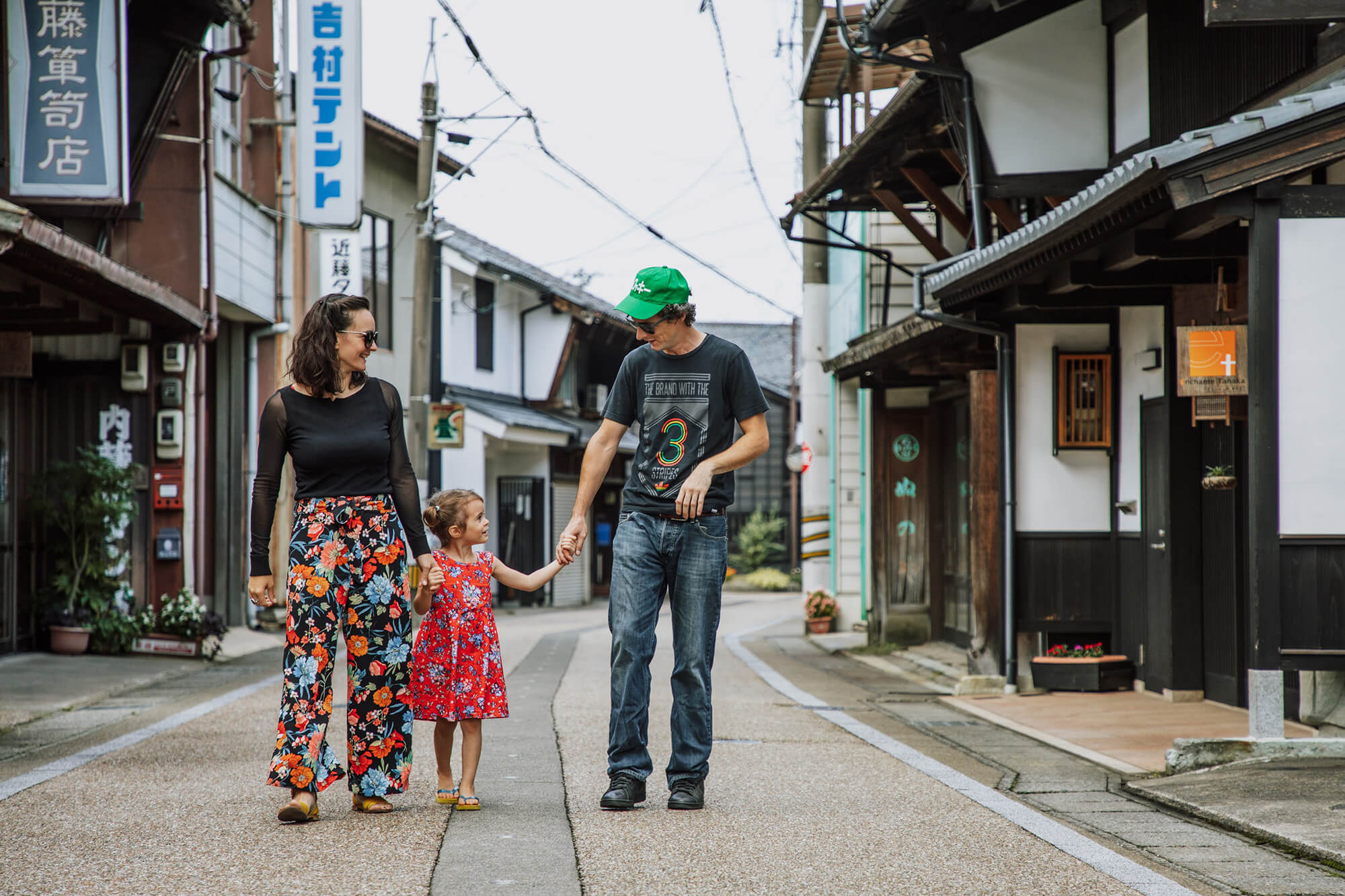 Right:Guillaume Pinsemin,Center:Manon,Left:Lauren Hata
Right:Guillaume Pinsemin,Center:Manon,Left:Lauren Hata
Guillaume is a videographer and film director from France.He became interested in Japanese culture after being exposed to Japanese Go in France.While traveling around Japan, he decided to live in Japan with Lauren on his fifth visit.They were particularly impressed by Ishikawa, where traditional crafts are flourishing and Japanese traditions remain strong.They moved to Komatsu because They longed for a rich natural environment and rural lifestyle that they could not experience in the city.Guillaume said, “I want to enjoy the cultural differences between Ishikawa Prefecture and Echizen City, even though they are in the same Hokuriku region.”This is where the journey of the three begins.
First came “kicoru” on Tansu-cho Street.Opened in 2014 by Oyanagi Tansu, a long-established Echizen tansu store that has been in business for over 100 years, the atelier offers custom-made furniture using traditional tansu techniques and collaborations with designers, as well as workshops.
This time, we will experience “making a wooden clock."We will create one-of-a-kind clocks by combining and decorating wood.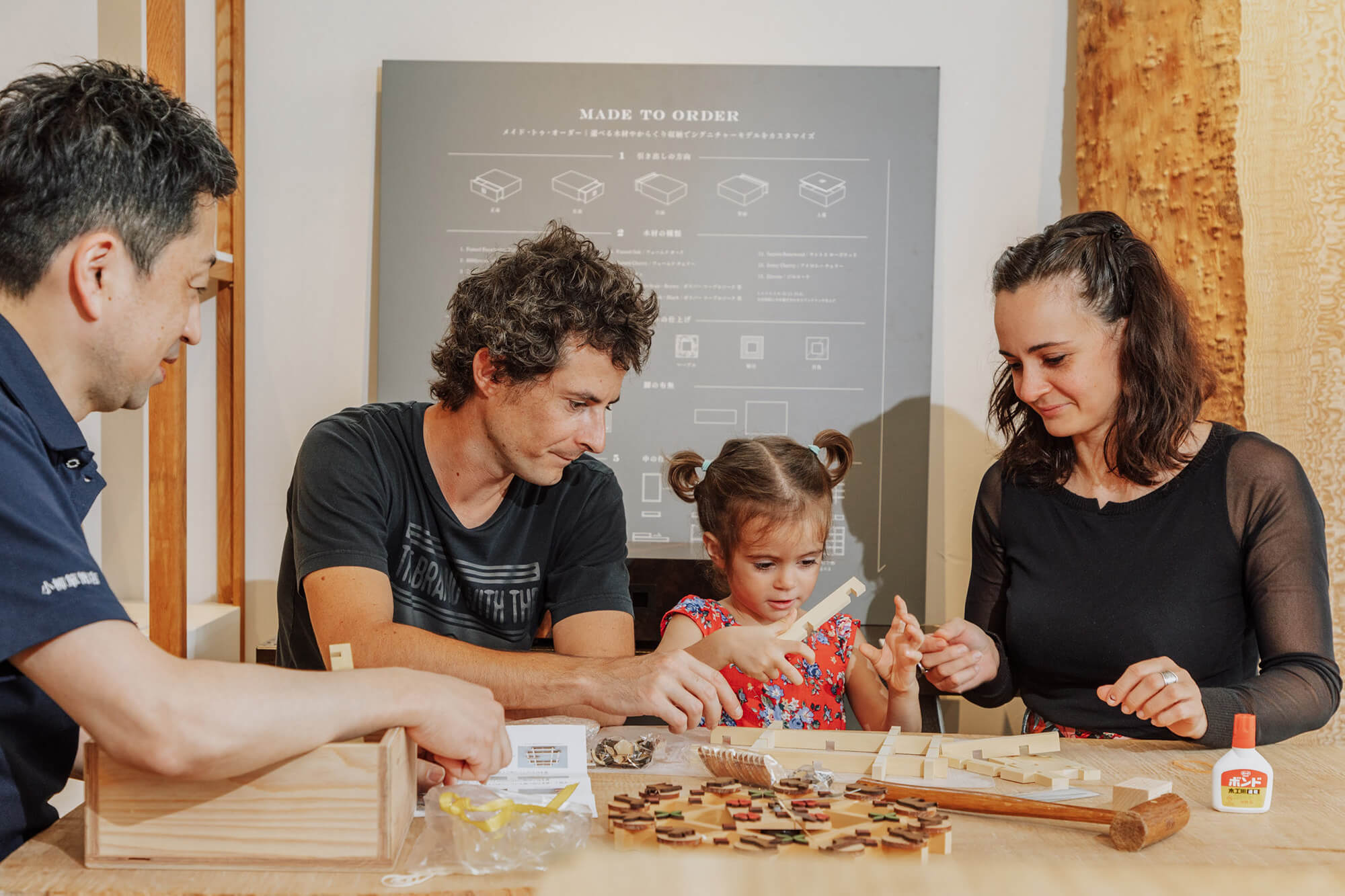
The workshop is open to small children, so Manon took on the challenge.The wooden parts are put together under the guidance of Norikazu Oyanagi, the fourth generation owner of Oyanagi Tansu.
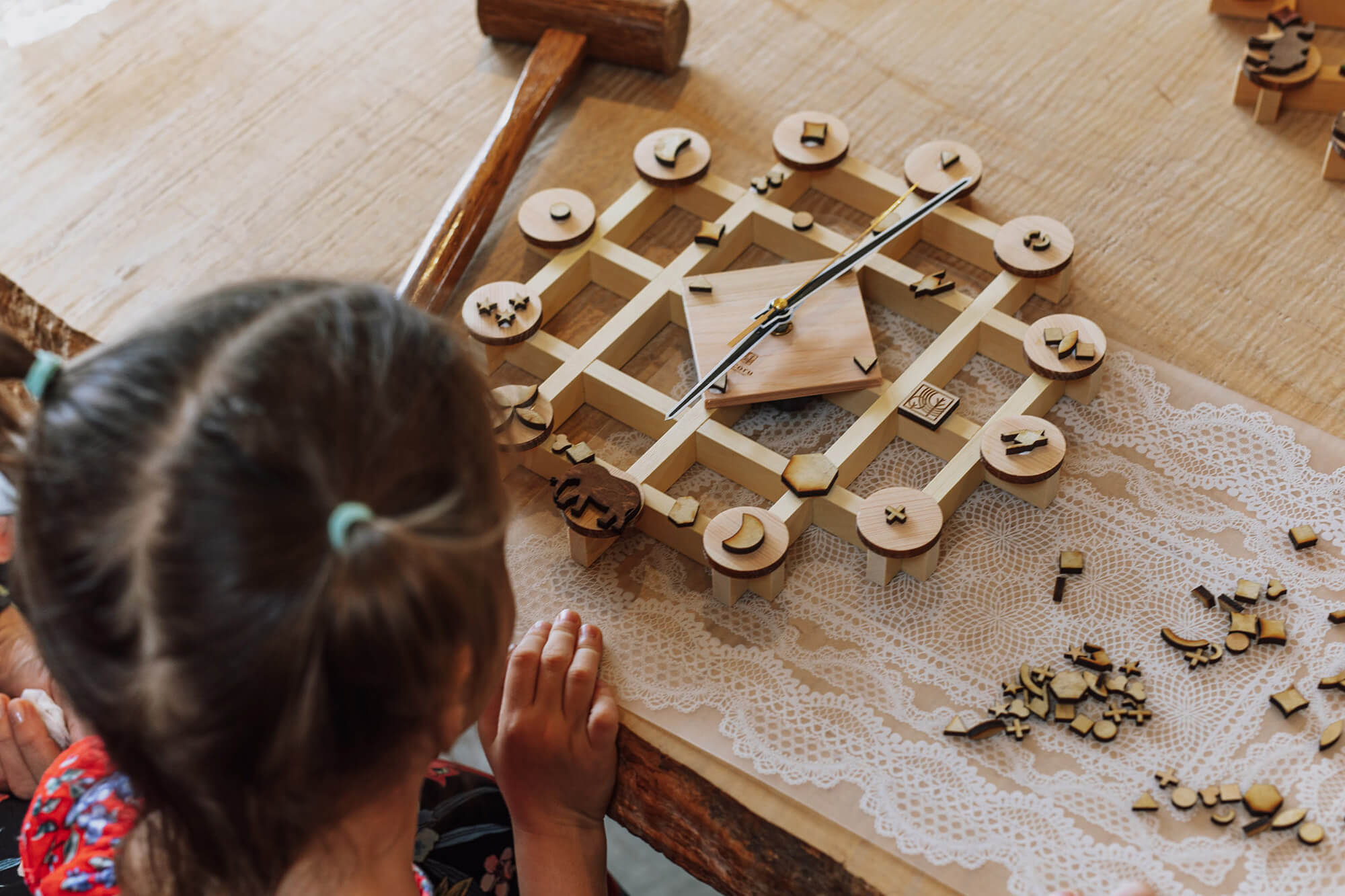
After combining the wood for the clock's base, the patterned and animal-shaped parts are decorated.Many people spend more than an hour trying to decide what parts to place where.Manon also has a serious expression on her face, as if she were a craftsman.
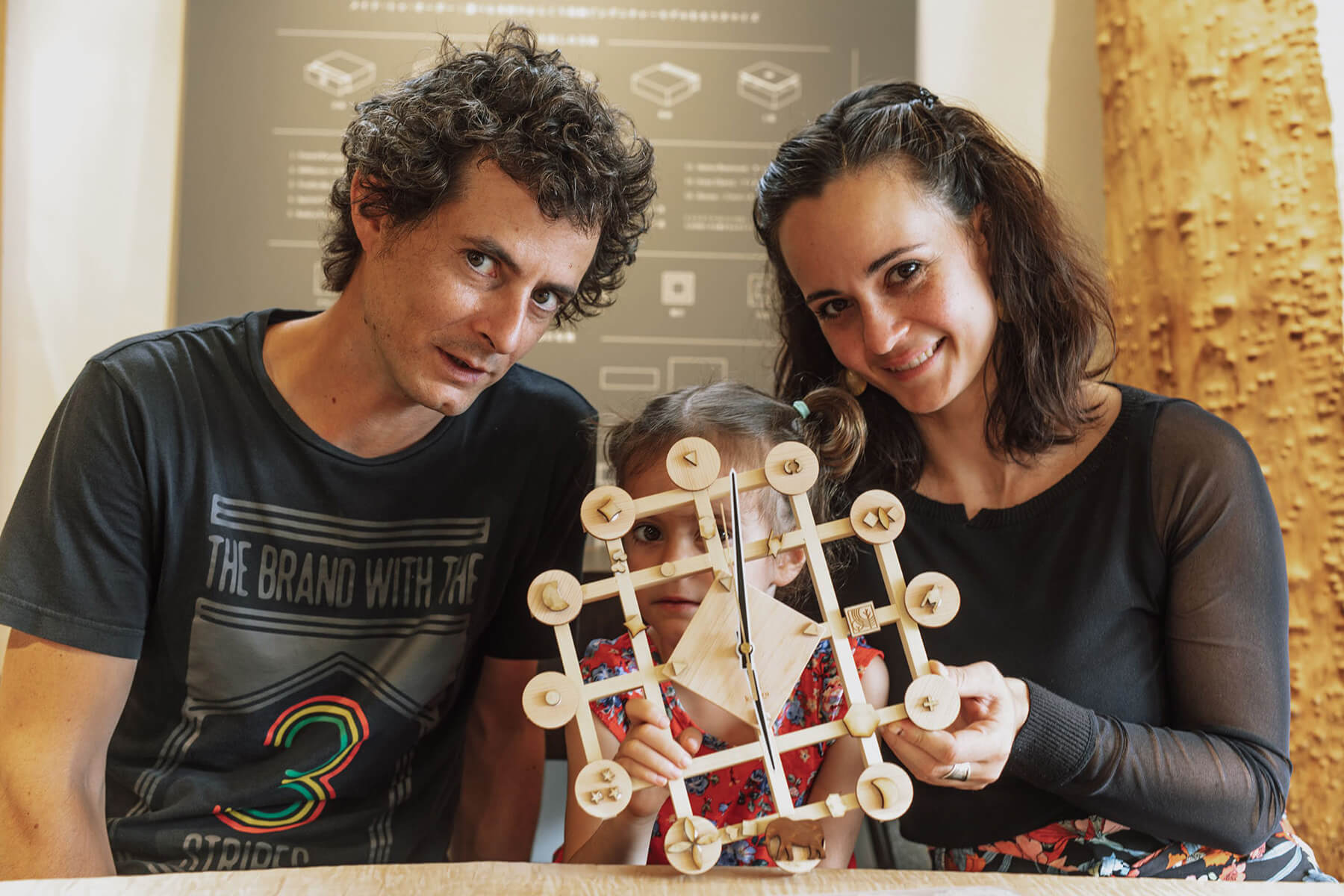
After nearly an hour of work, it was finally completed!Manon looks a little shy, but she seems very satisfied with the finished product.The finished clock will be displayed in her room.
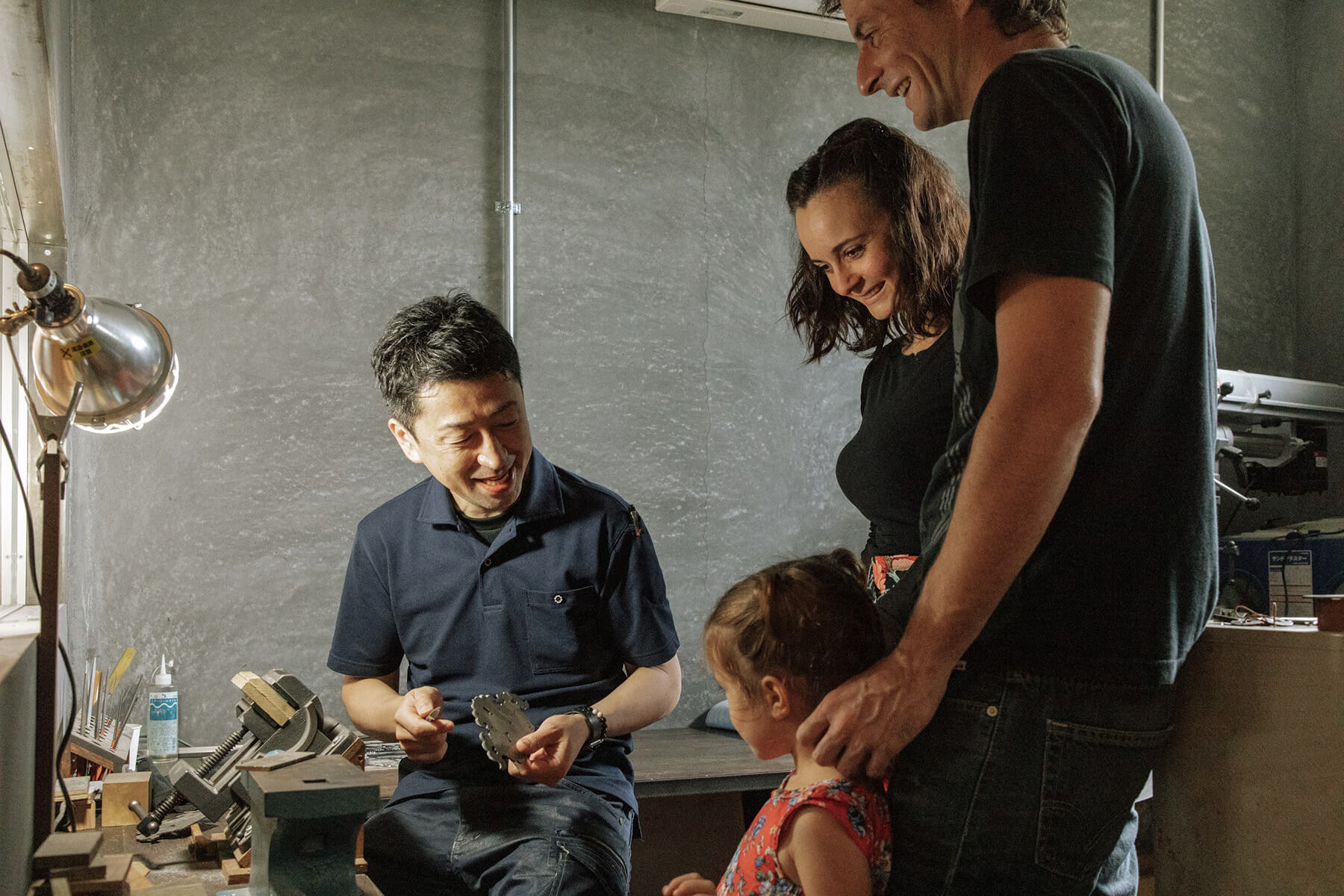
After the workshop was over, we were shown how chests were made.Echizen tansu is the result of a combination of three Echizen techniques: a unique *sashimono technique of joining wood to wood, metal fittings using hammered blade techniques, and lacquer coating to protect the wood and make the tansu strong.It is a traditional craft that was born in this region, where various manufacturing areas are concentrated within a 10-kilometer radius.Oyanagi Tansu also offers workshop tours, so you can get a better understanding of what goes on behind the scenes of manufacturing.
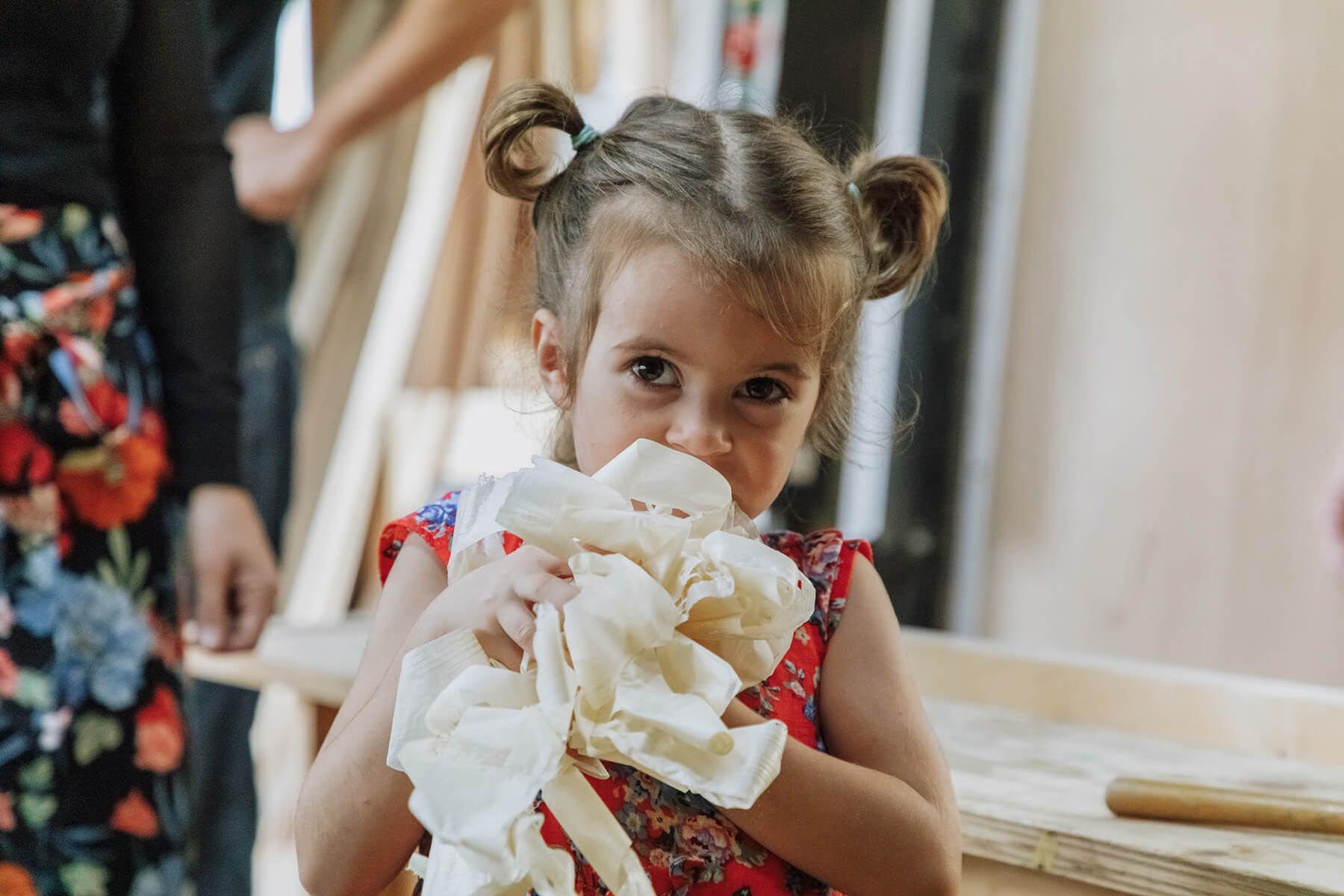
Planing wood is indispensable in the production of Echizen chests, which are made with the utmost care and attention to detail.The thinly planed wood looks like paper.The cypress wood chips had an indescribably good smell, and Manon had her hands full.
After the workshop at Oyanagi Tansu, participants will walk along what is known as “Tansu-cho Street."More than a dozen Japanese and Western furniture manufacturers and joinery merchants were clustered along the 200-meter-long street, which was inhabited by chest of drawers makers from the late Edo period to the middle of the Meiji period.
There are stores that retain their old-fashioned charm as you walk around.Guillaume said, “It's like stepping back in time to the old world."
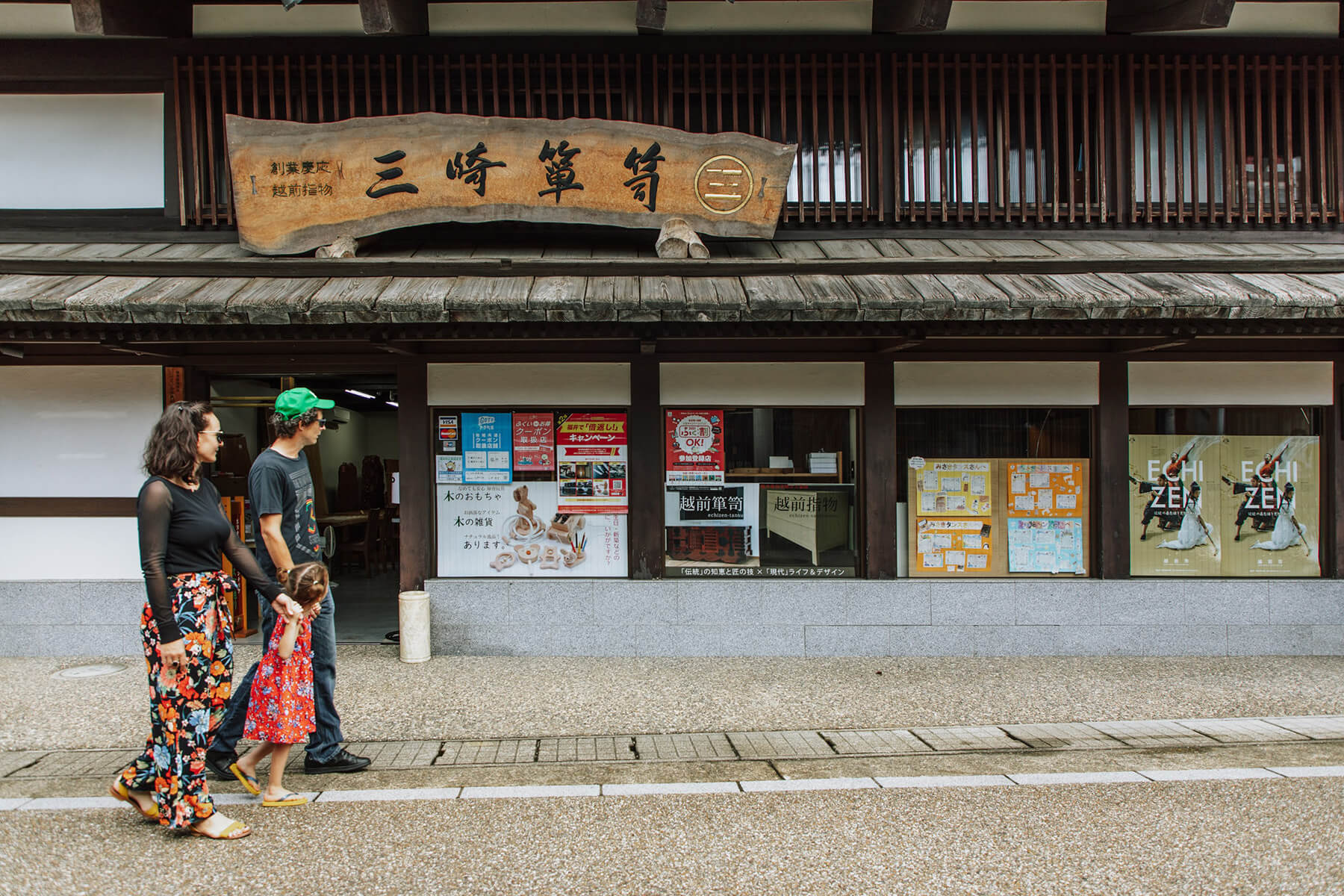
On the way there, we stopped at Misaki Tansu Store, a long-established chest store with a history of more than 160 years.Founded around 1865, the company produced “Echizen-tansu” (Echizen chests), which were used as a substitute for a safe for merchant families during the Edo and Meiji periods, as well as custom-made *sashimono for temples and shrines.Currently, the company makes a variety of products using chests of drawers techniques, ranging from single-piece furniture using all-paulownia chests and sashimono techniques to wooden toys.
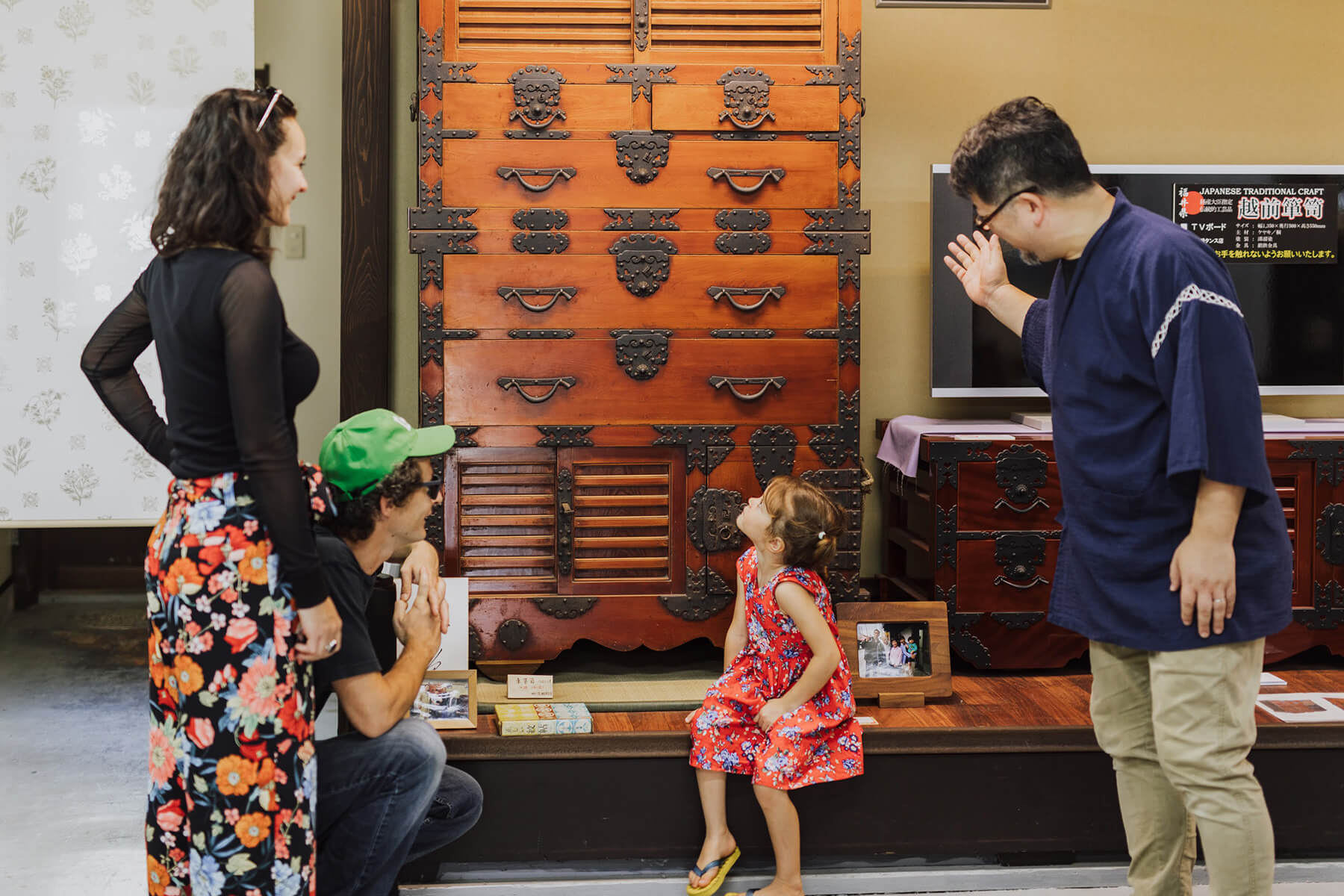
“Echizen tansu is very durable and is said to last for more than 300 years,” said Toshiyuki Misaki, the eighth-generation owner of Misaki Tansu Store.The chest of drawers in the back of the store was made by Mr. Misaki's ancestors 150 years ago.However, none of the metal fittings have rusted, and the beautiful zelkova wood grain stands out.

While looking at a chest of drawers, Lauren noticed a “heart mark” on the metal fittings!However, this is not a heart mark, but a pattern called “inome,” which resembles a boar's eye.The eyes of the beast have the power to ward off evil, which is why they are often seen on Echizen chests.
*sashimono=Boxes, furniture, fittings, etc. made by combining wood. In particular, it often refers to items that are assembled using techniques such as mortise and tenon without using metal nails.
Manon said, “I'm hungry!” so we decided to have lunch at her request.
We came to “Menbou Iseya,” a restaurant established in the Edo period in Echizen City.Soba made from buckwheat flour produced in Echizen City is very popular and attracts many fans from within and outside of the prefecture.
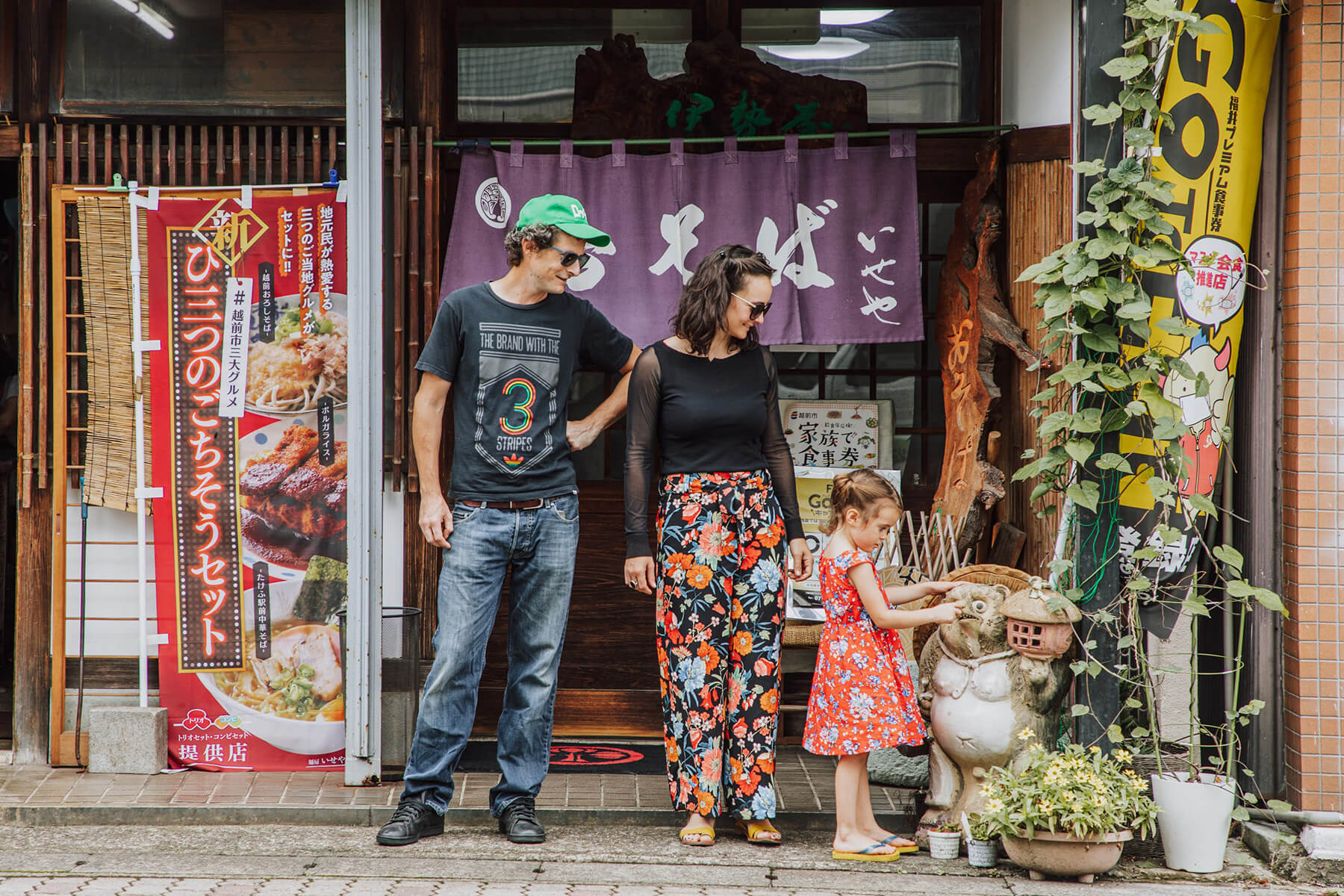
What you can enjoy here is the “Himitsu no Gochiso Set” in which you can enjoy Echizen City's famous “Echizen Oroshi Soba,” “Borga Rice,” and “Chuka Soba” all at once.
“Echizen Oroshi Soba” is a well-known specialty of Fukui Prefecture, but it actually originated in Echizen City.It is said that in 1601,Honda Tomimasa, who became lord of the castle in Fuchu (now Echizen City), was accompanied by a soba craftsman from Fushimi, Kyoto.
The “Borga Rice” is an omelet with pork cutlets on top, topped with the restaurant's special sauce.It is said to have been created more than 30 years ago in Echizen City, and is a soul food loved by the locals.
And we must not forget the “Chuka Soba”.While the term “ramen” became widespread during the postwar instant ramen boom, the traditional name “chuka soba”continued to be used in Echizen City, especially in the area around the former Takefu Station.This is another Echizen gourmet dish that is loved by the locals and boasts strong popularity.
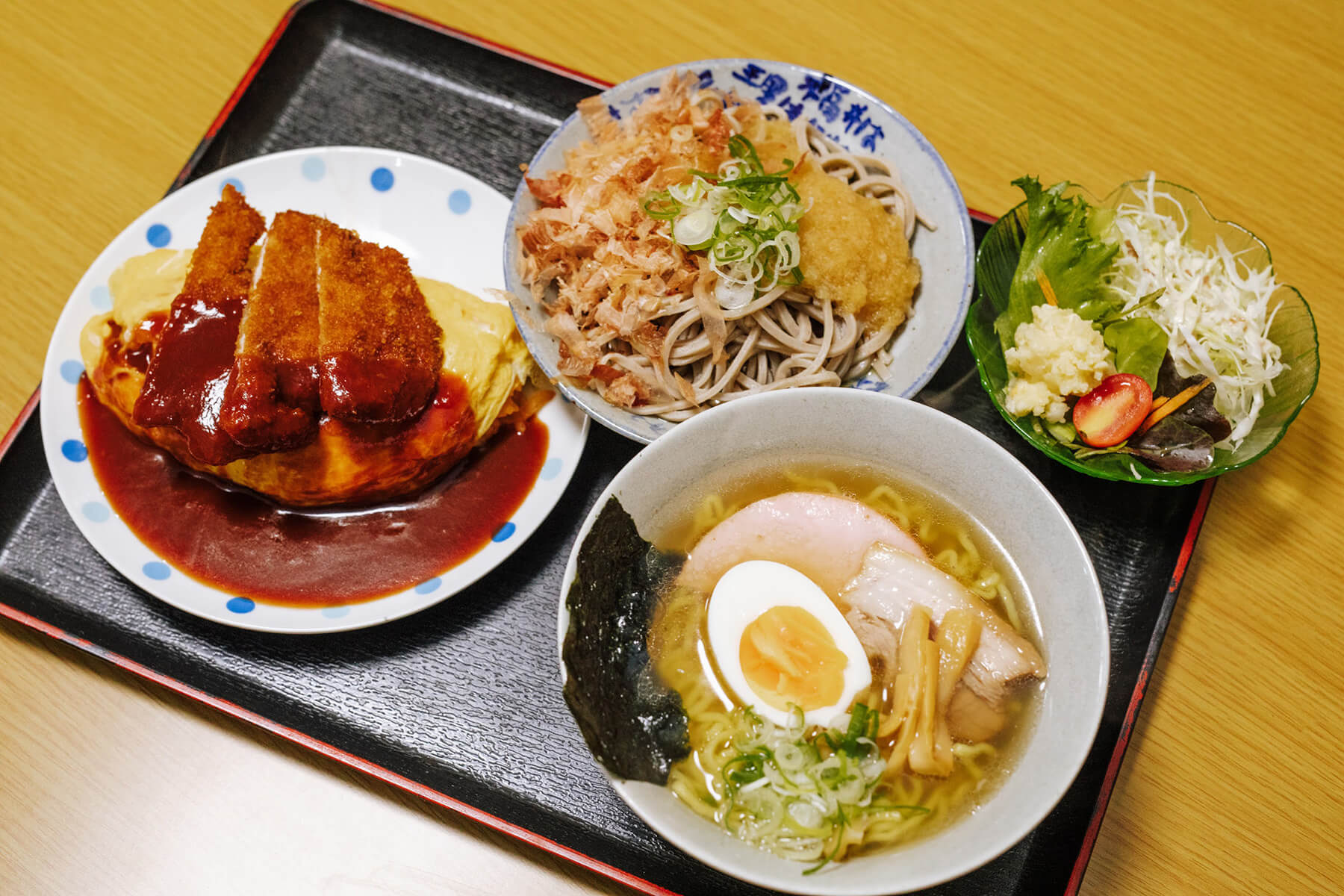
The volume of these three popular dishes all together is this large!Everyone will share the dishes together.
The Echizen Oroshi Soba have a buckwheat aroma as you bite into them, and the Borga rice pork cutlets made with filet mignon are easy for children and the elderly to eat and go great with the omelette rice.Manon seemed to like the light-flavored the Chuka Soba, made with a broth of Uru-me and kelp, so much that she had to have another bowl.

When you have had your fill, take a break.Next we came to the Kako Satoshi Picture Book Memorial Museum “Raku".
Kako Satoshi, the proud picture book author of Echizen City, is well known for his picture books “Karasu no Panya-san(Mr.Crow's Bakery)” and “Daruma-chan(Little Daruma)."The Picture Book Museum has a collection of about 5,000 picture books and picture story shows created by Kako Satoshi, and fans of the author visit from all over Japan.
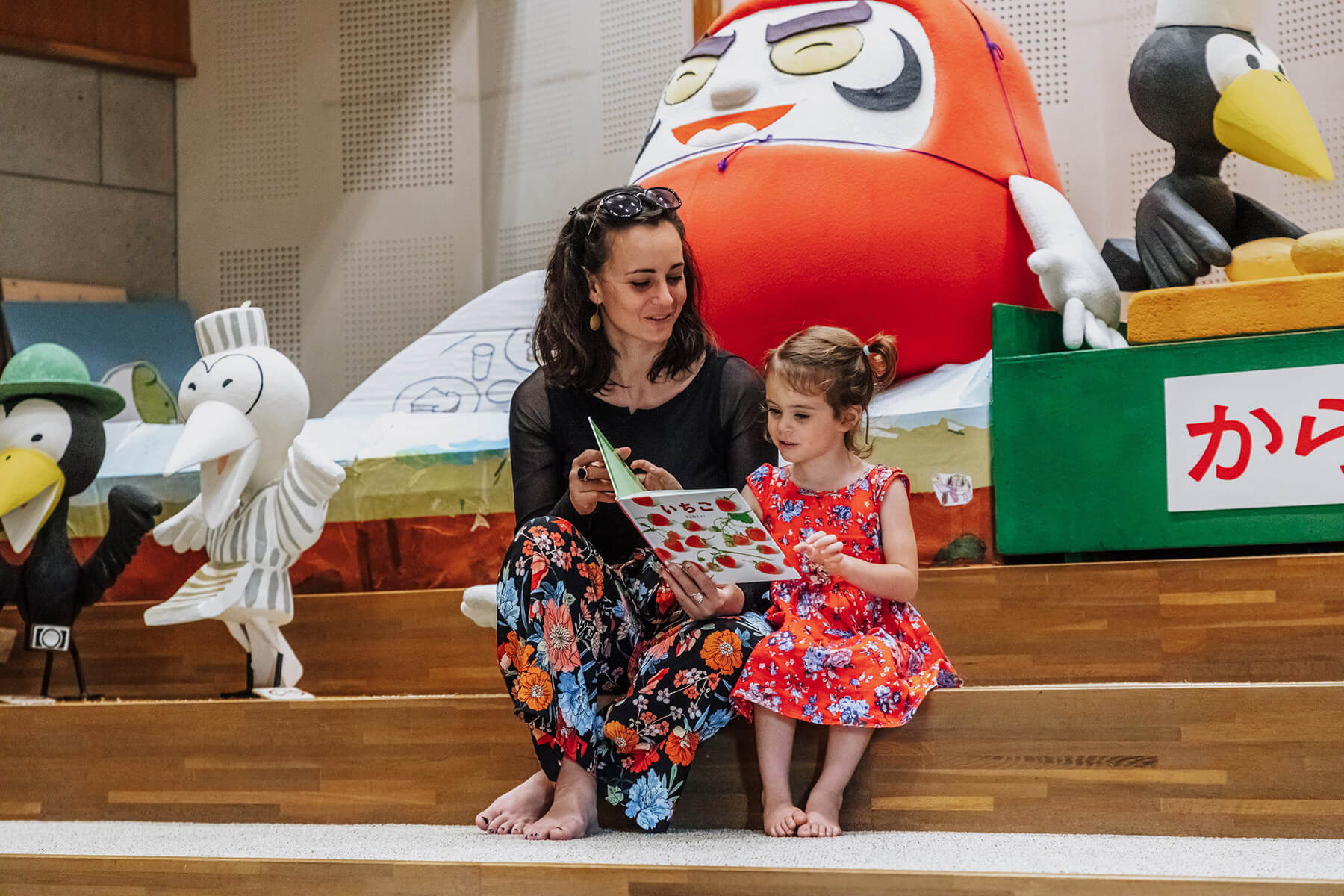
Manon was so excited to see so many picture books, saying, “Mommy, read this!" and brought many books to Lauren.The reading time has begun.
In addition to the picture book rooms, children and adults alike can enjoy the world of Kako Satoshi in the play room, where they can dress up as Daruma-chan and Matryoshka, play old games and enjoy crafts, and where original paintings by Kako Satoshi are on display.
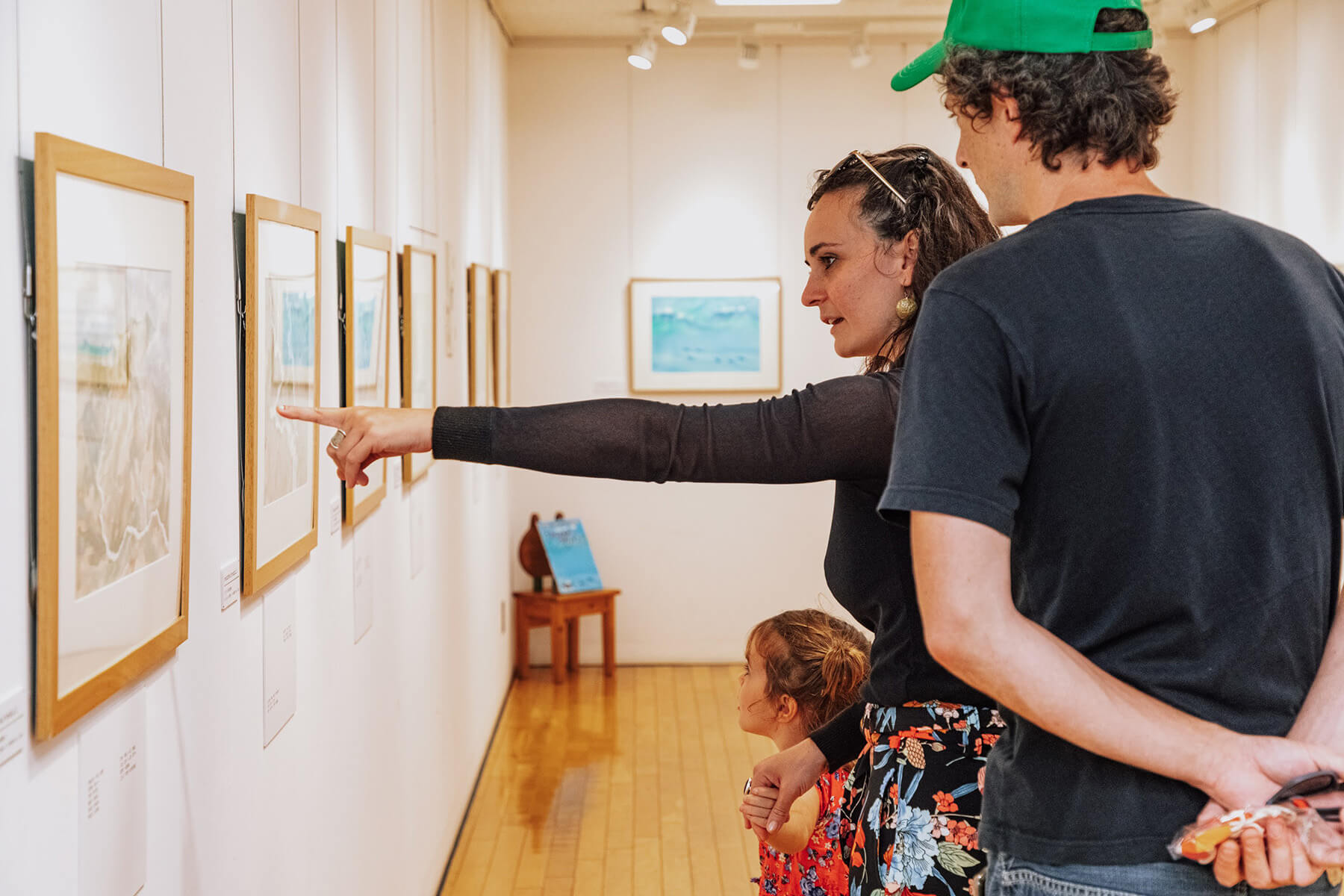
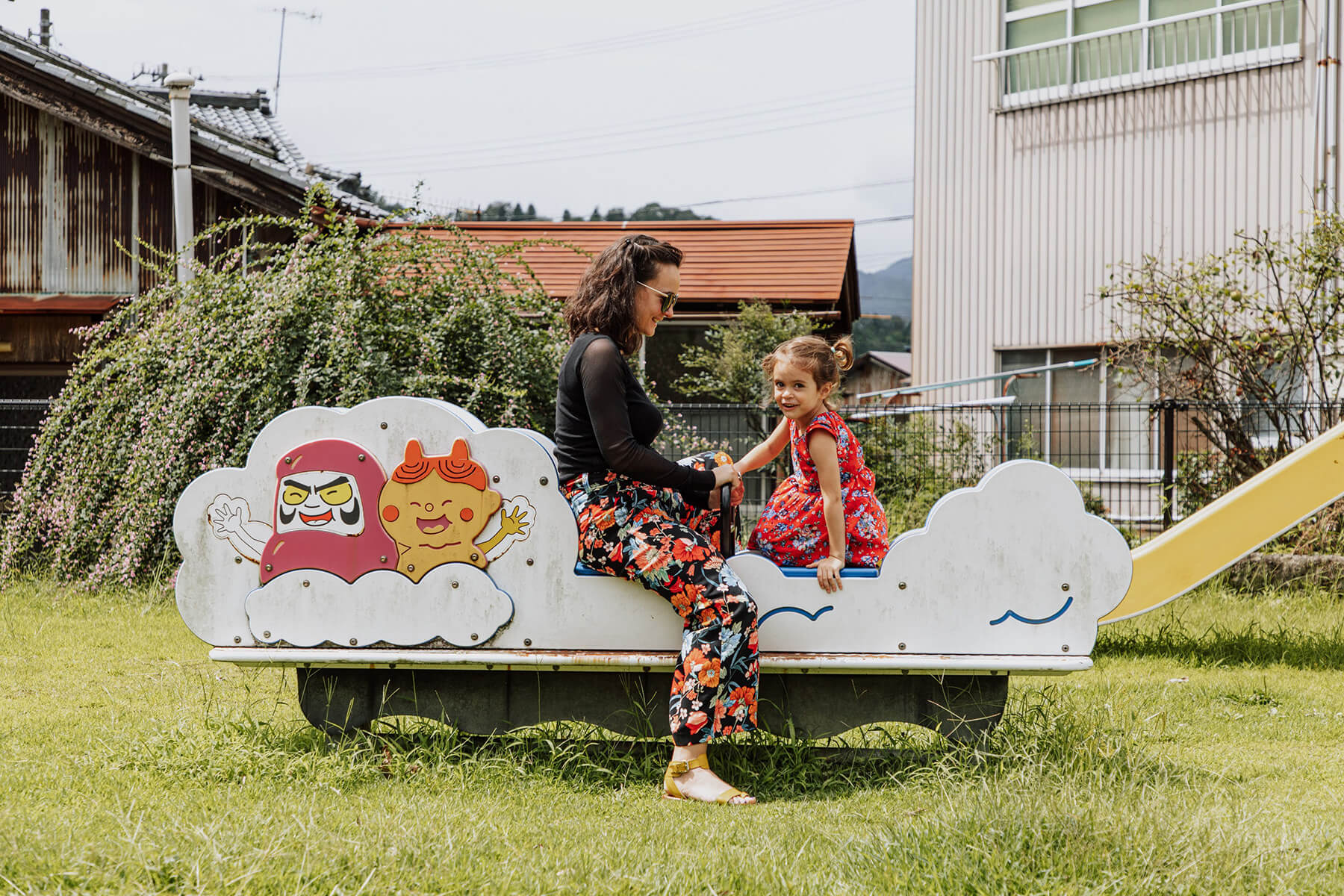
There was also original playground equipment outside, which made Manon even more energetic. It was a pleasant space where not only children but also adults could relax.
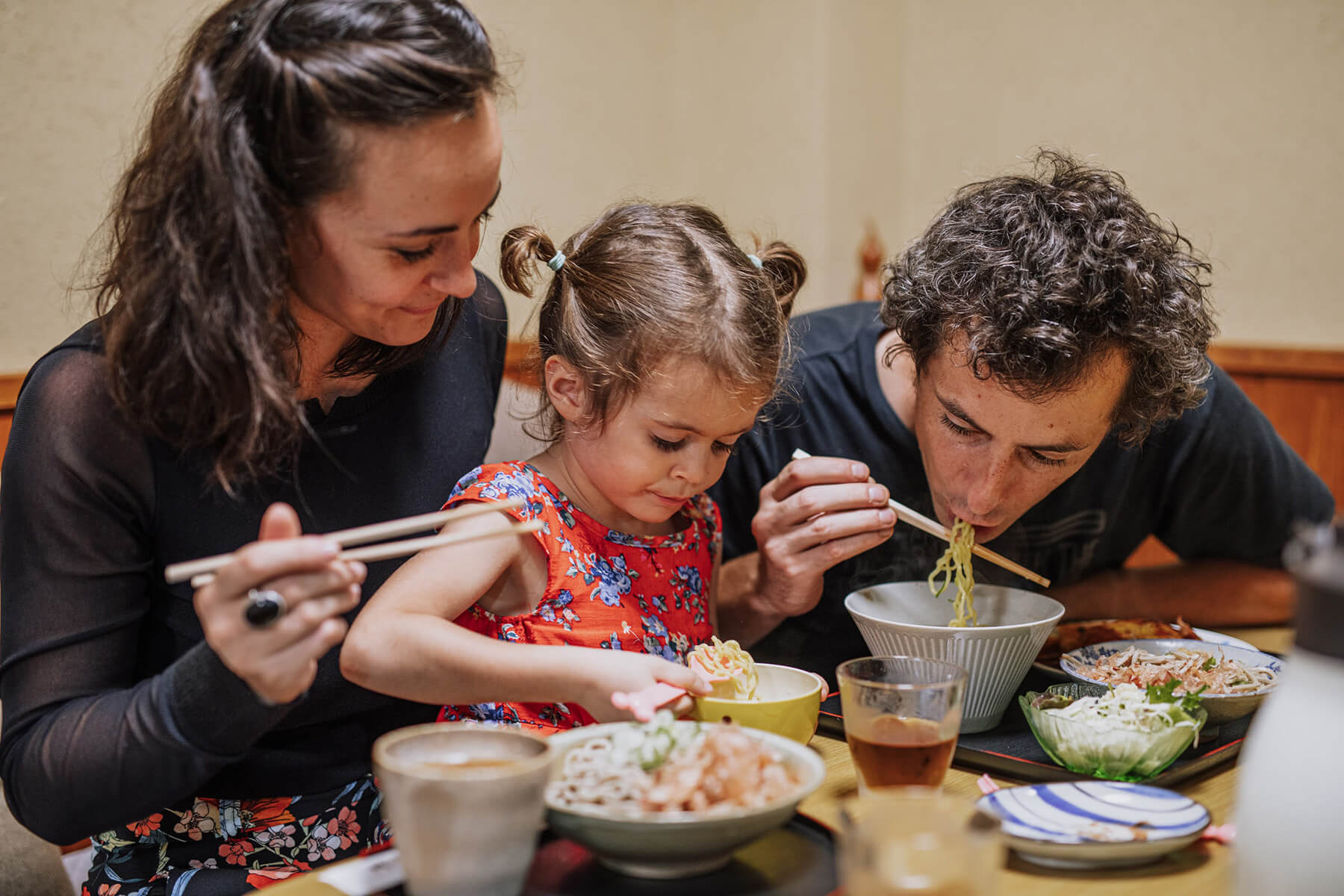
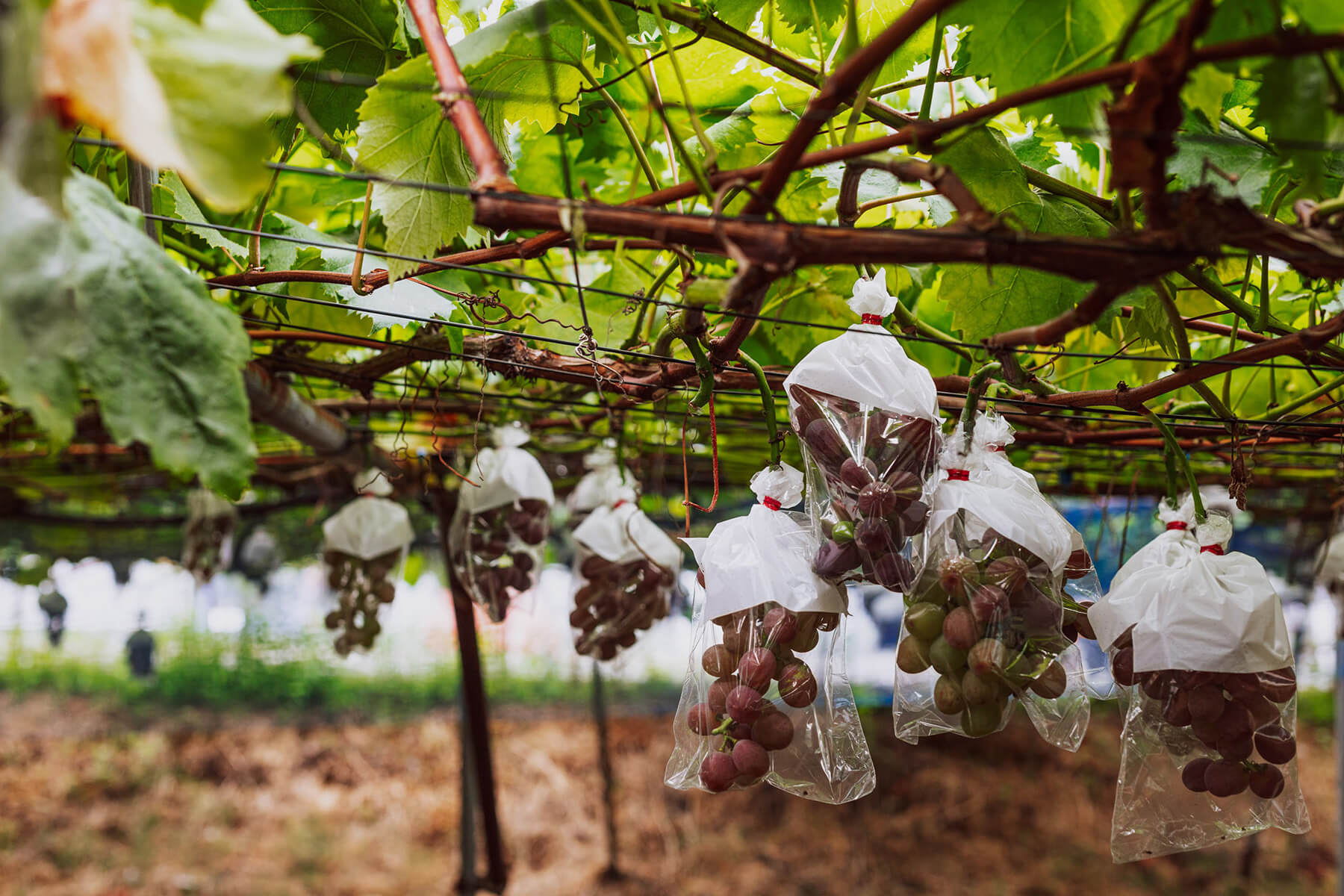
They played a lot and now it's time for a snack.The next stop was “Kanko Nouen Donguri Yama” (Tourist Farm Donguri Mountain), located on the west side of Echizen City.Here, visitors can enjoy cherry picking in June and grape picking from early August.
Upon entering the vineyard, a faint sweet aroma wafts through the air.Grapes include the well-known Kyoho grapes as well as rare varieties such as Aki Queen and Black Olympia that are not available in the market.Among them, the Shine Muscat is so popular that reservations fill up quickly every year.
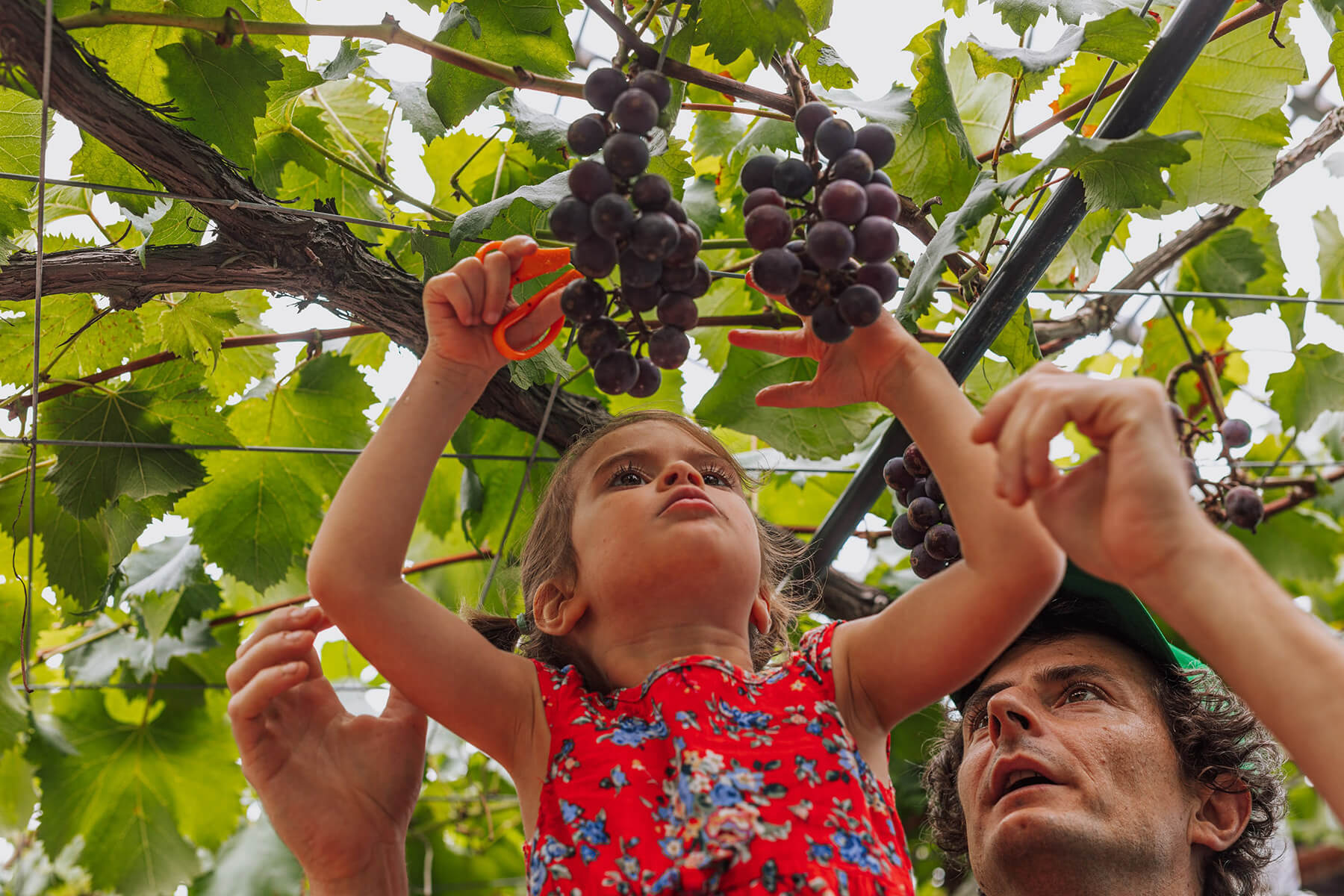
Manon also tried grape picking.The bunches of grapes are heavy and full of juice, and Guillaume assists her in the high areas while they pick the grapes together with scissors.
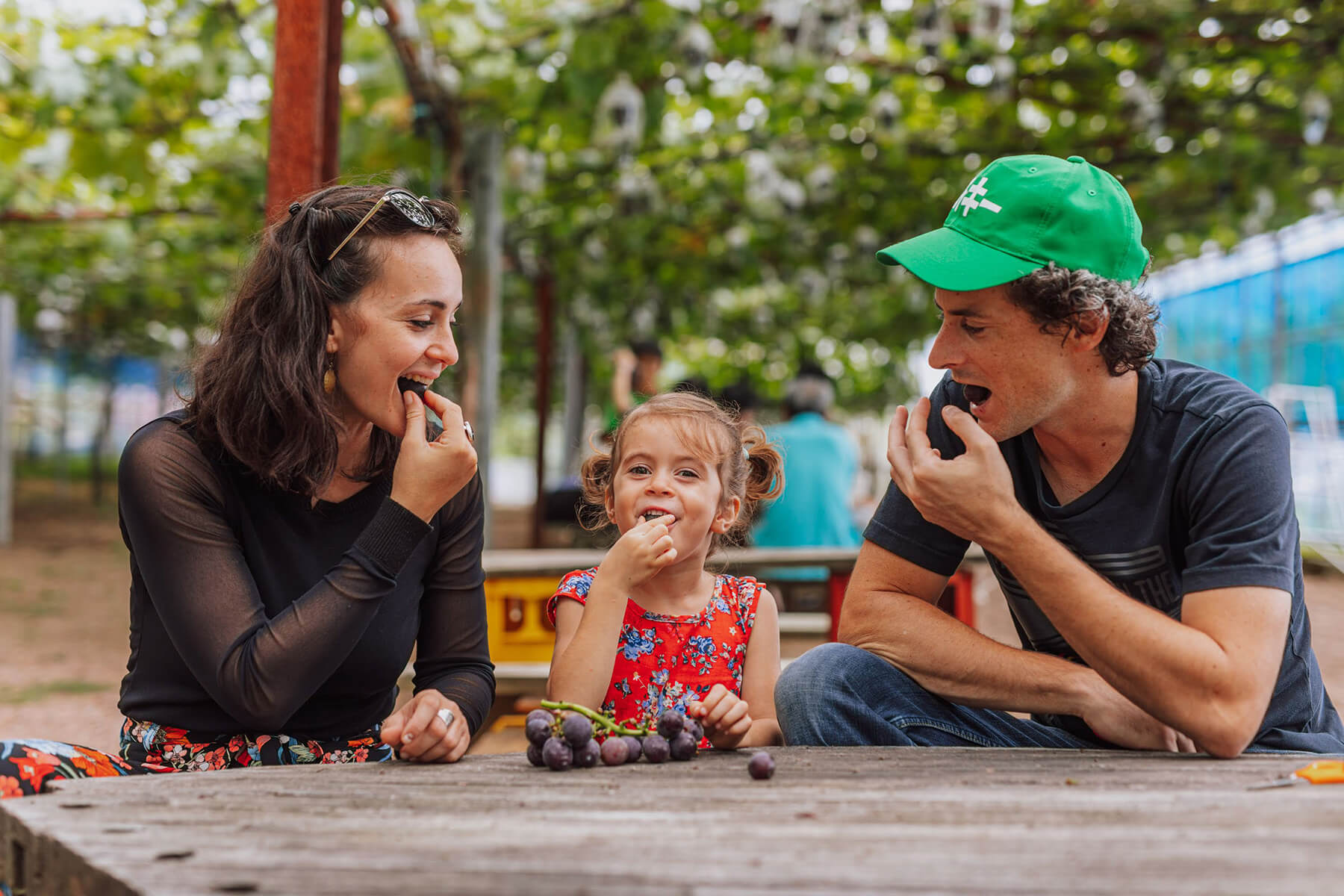
The most luxurious thing of all is to be able to eat the grapes they picked themselves right there on the spot.The seedless nature of the fruit makes it easy to eat, and its juicy sweetness fills the mouth.
Grapes picked in the garden are all-you-can-eat, but the rule is to eat a whole bunch.A fee will be charged if you want to take home the remaining portion.Manon was very happy to taste the various varieties.
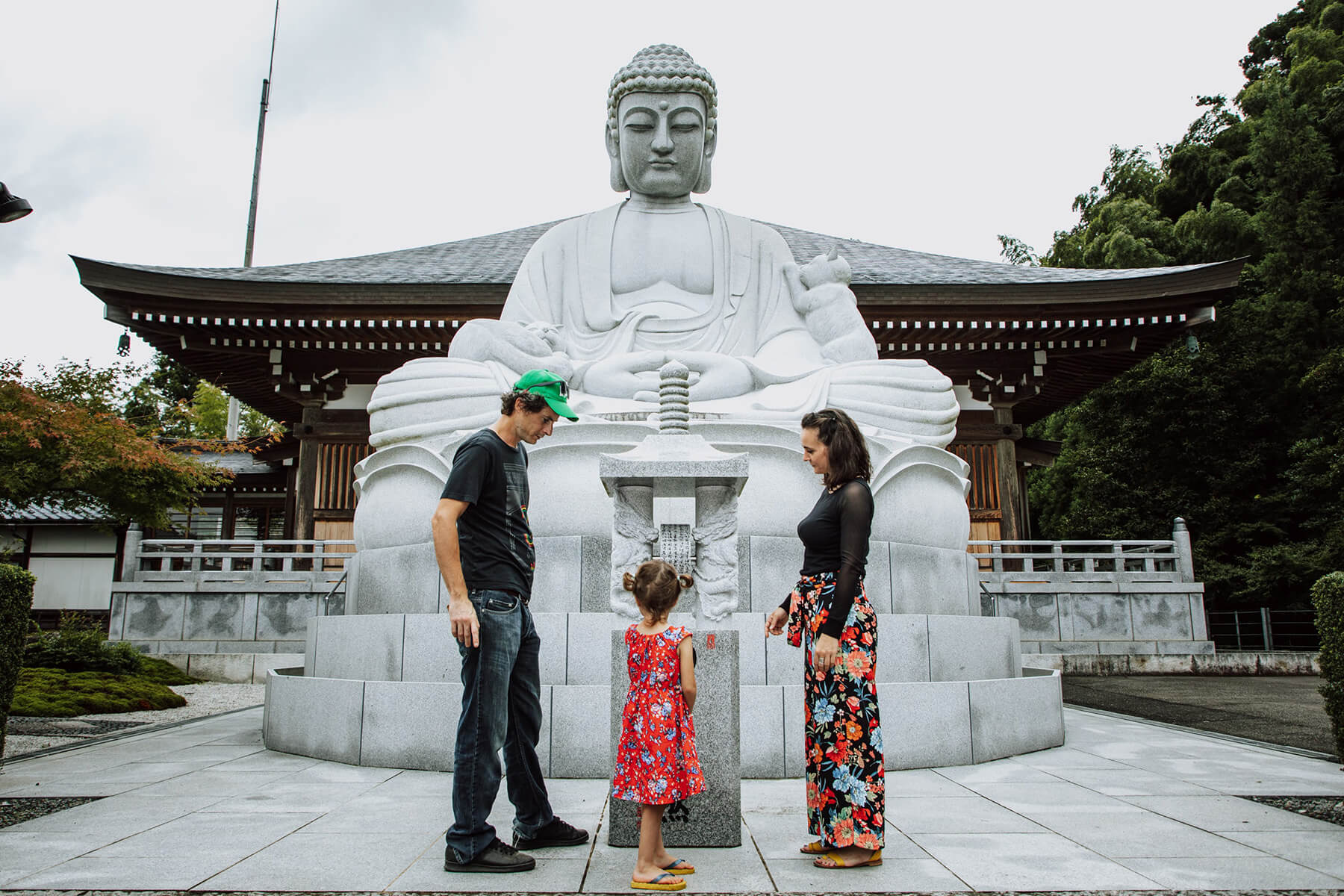
The last temple visited was Gotanjoji Temple, located about 5 minutes from the Takefu IC on the Hokuriku Expressway.Built in 2009, this temple is associated with Zen master Keizan of the Soto sect.
The temple became known as “Neko-dera” (cat temple) after the priest took in a cat that had been abandoned on the temple grounds, and it is now a popular spot visited by many people from all over Japan.
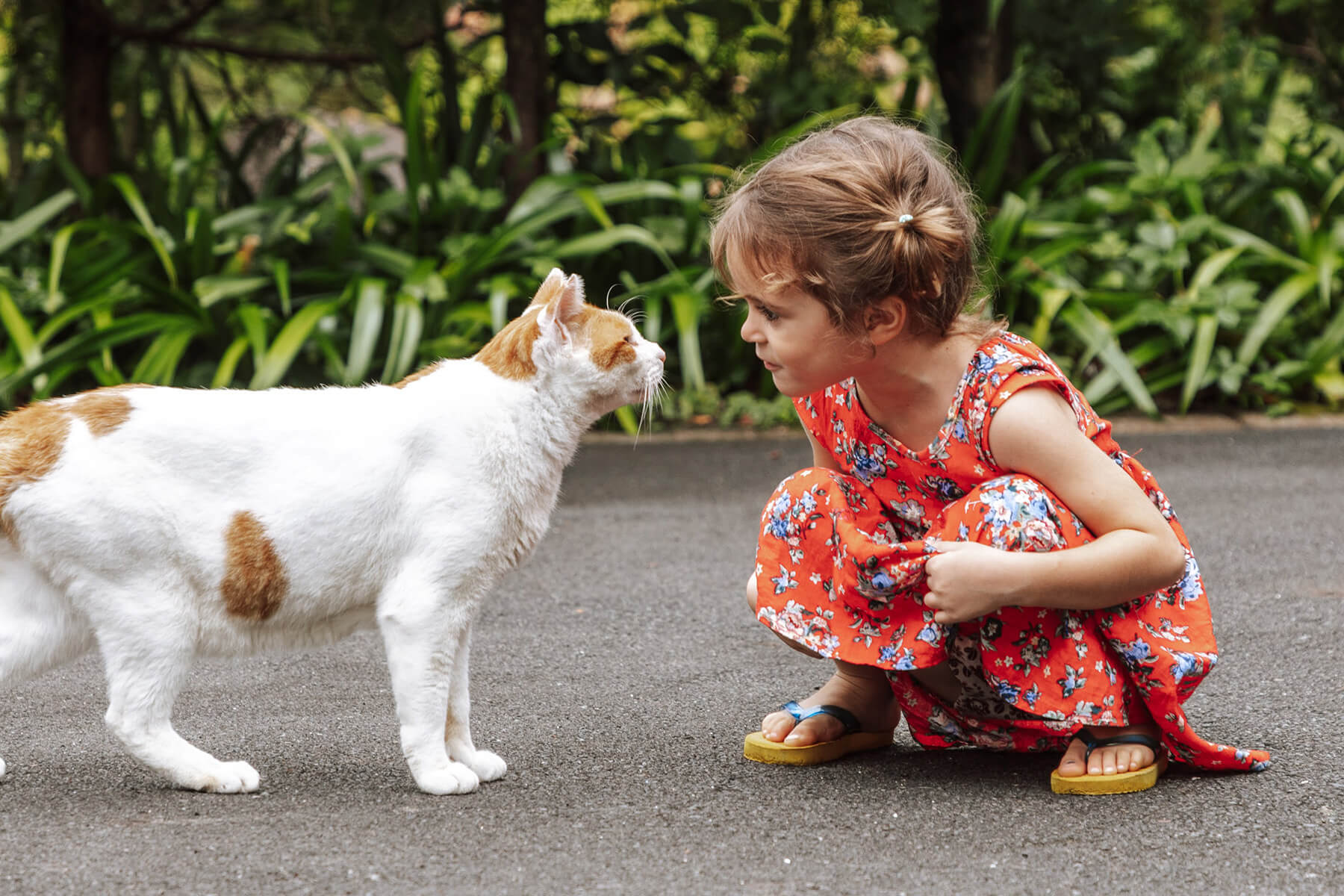
At one time, the number of cats kept at the temple had grown to about 80.However, through steady efforts such as giving each animal a name and collar, taking care of them, and holding transfer events to find foster parents, the number of animals has been reduced to less than about 30 today.
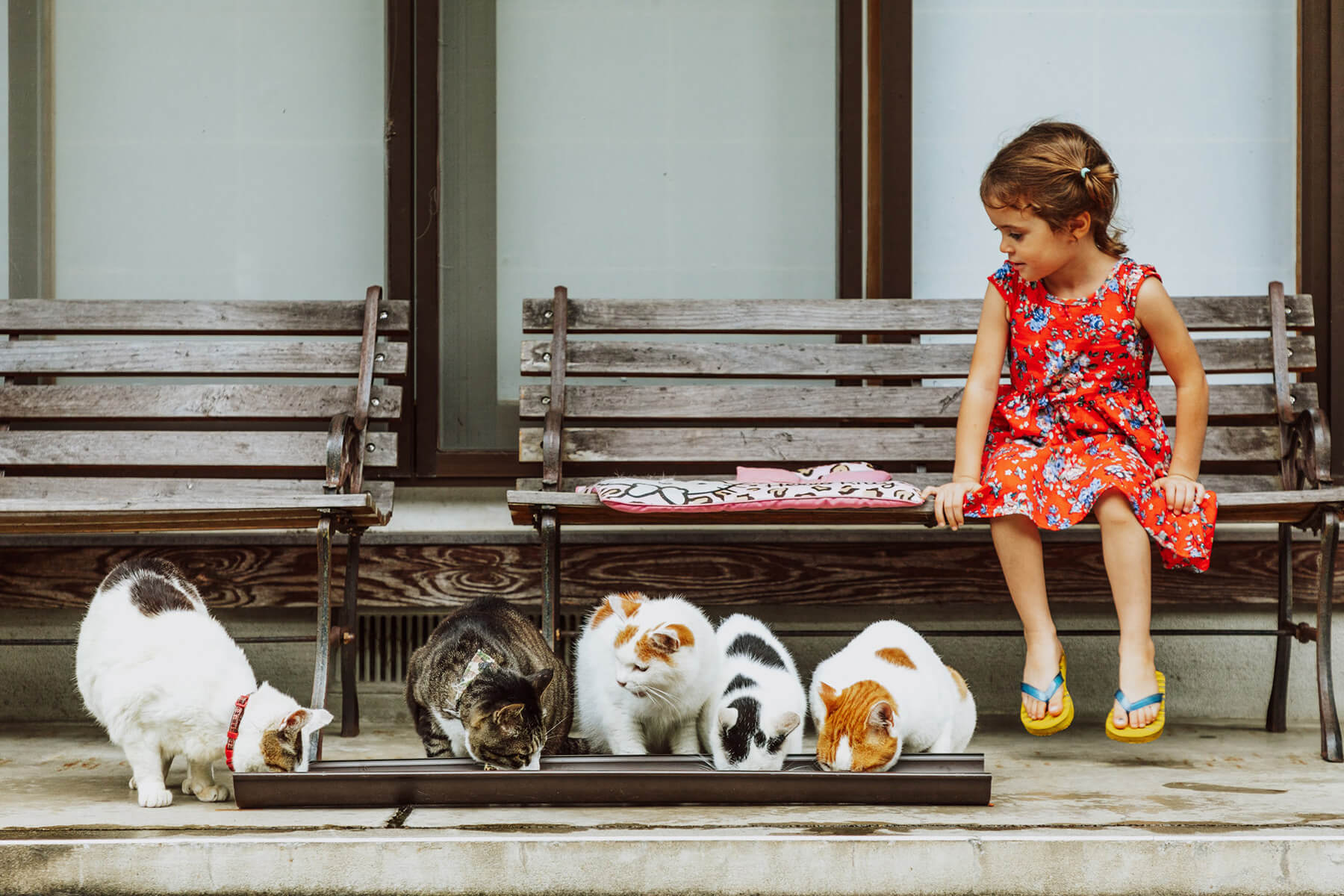
Cute cats taking a leisurely nap or eating their food are soothing and relaxing.Thus ended the Echizen journey.
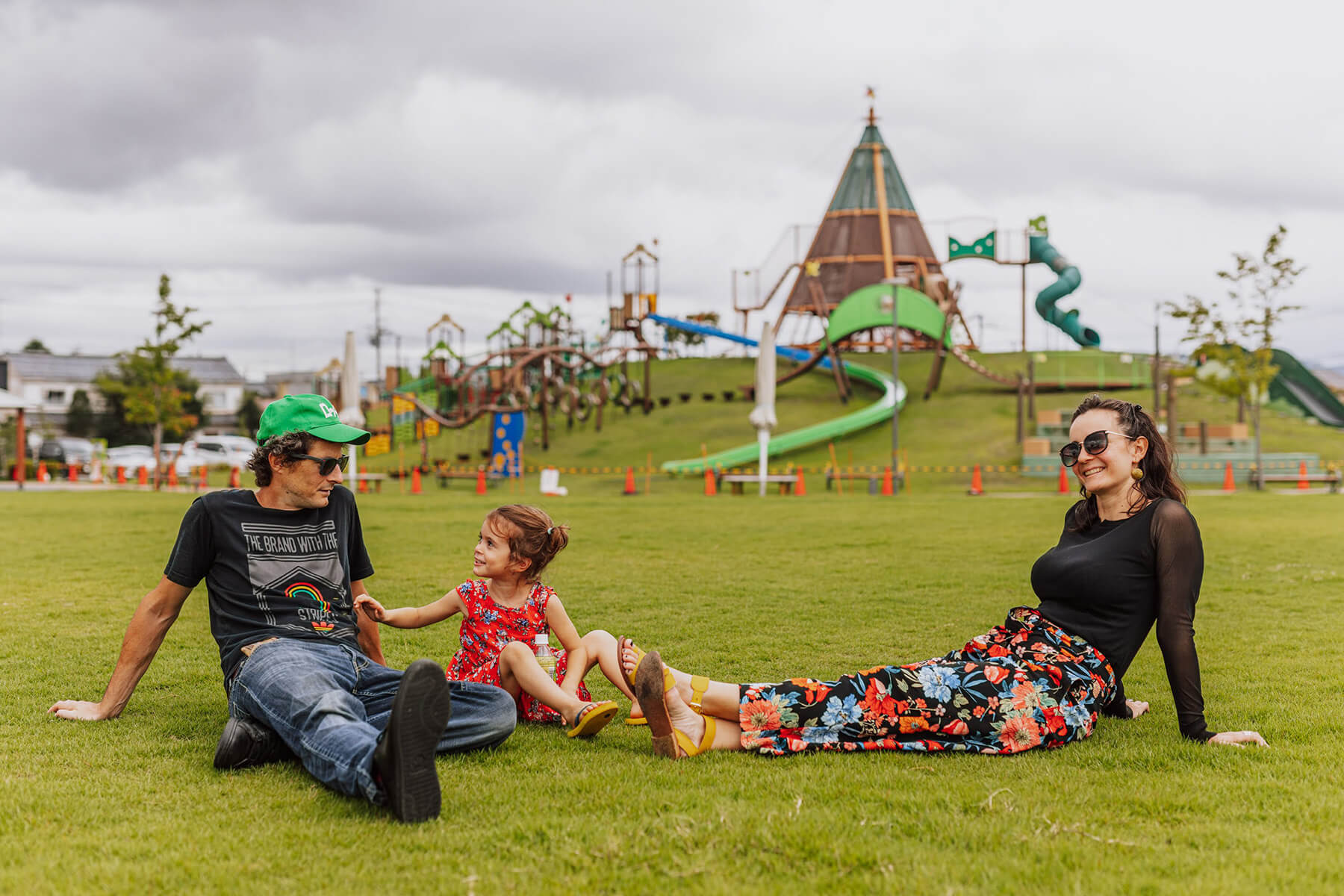
Guillaume said, “I learned a lot about Echizen City that I didn't know before, and it inspired me in a new way."Lauren is happy, saying, “I can't wait to come back because there are so many places we can enjoy with kids."Manon was so energetic and enjoying herself all day that she forgot to take a nap.
Both children and adults seemed to be very satisfied with the trip, which was packed with the charms of Echizen, including craftsmanship, food, nature, and history.